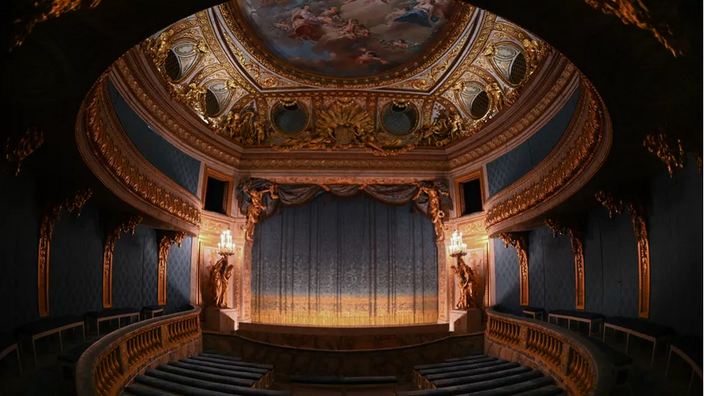Pandemic or not, it is a room that very rarely welcomes the public.
Paradoxically, however, the Queen's Theater built for Marie-Antoinette in Versailles continues to be refurbished.
“
It's a bit like Sleeping Beauty,
” Raphaël Masson, chief curator of the Heritage of Versailles, told AFP, referring to this heritage jewel hidden in the gardens of the Petit Trianon and Marie-Antoinette's secret place.
Read also: At the time of the Covid-19, the Palace of Versailles is getting a makeover
This is where, in the summer of 1785, the queen, passionate about music and theater, takes the stage for the last time to play the role of Rosina in
The Barber of Seville
under the eyes of its author, Beaumarchais.
Built by Richard Mique, architect of Marie-Antoinette, this theater - the only one in France to have kept an 18th century machinery in working order - was spared by the Revolution because it was deemed worthless and has served very little in 240 years. 'existence.
“
This theater is a miracle of conservation;
in the second half of the eighteenth century, there was a real theatromania, any great financier, any prince set up a theater at home, but all of them have almost disappeared,
”Raphaël Masson told AFP.
During the health crisis, which made guided or school tours impossible to discover once a month the scenic effects of the time, curators and artists set about reproducing the stage curtain which was very damaged.
Fragments of decor
Hanging in mid-December, the new curtain, in a cobalt blue, with a gold border and richly ornamented, is in reality "
a linen canvas painted in trompe-l'oeil that imitates a pleated
", explains the curator.
Pure illusion like the room itself, built like a theater set, in faux marble, papier-mâché and cardboard behind its golden appearance.
The original curtain having been sold after the Revolution, it is a copy of the curtain: “
a canvas, which was used under the Empire, was repainted during the Restoration, repainted under Louis-Philippe.
It was coming to the end of the race and it was absolutely necessary to keep this authentic testimony
”, now kept in the bottom of the theater, explains the curator.
"
We pushed the logic of restitution to the point of assembling the lengths of linen by hand as at the time,
" says Raphaël Masson.
Read also: Appeal to the generosity of deputies for the restoration of the Jeu de Paume room in Versailles
Another project: complete the backdrop of this theater-museum.
The room, which in Marie-Antoinette's time could accommodate up to 250 spectators, has three sets representing a rustic interior, a forest and the temple of Minerva, the oldest complete theater set in the world (1754).
This miracle is "
a unique testimony to the virtuosity of 18th century decorators, it is our Mona Lisa here
", smiles Mr. Masson.
Its fragility means that a copy is considered to be able to show what it looked like.
"18th century special effects"
The sets are from the 19th century but function exactly according to the principle common in the 18th century, with a change of scenery "
on sight
", that is to say with the curtain raised, under the eyes of the spectator.
The frames carrying the decorations slide on rails on the courtyard side and garden side, a crossover which offers the viewer a striking perspective.
“
These are the special effects of the 18th century,
” explains Raphaël Masson.
Thanks to the inventories, the curators are working to reconstruct a fourth repertoire set, “
the public square
”, of which they only have the friezes and a frame, using tempera painting as in the 18th century.
They will also try to reconstruct period machinery that allows a tree decoration to emerge from a trap door.
Very fragile despite its restoration in 2001, the room has never been brought up to standard in order to remain faithful to its history.
“
There is a concert every two years and we are so moved by listening to the musical notes escaping from the pit
, remembers Raphaël Masson.
The theater cannot be operated on a regular basis, but we wait until the end of (the health crisis) to show it in front of an audience.
"

